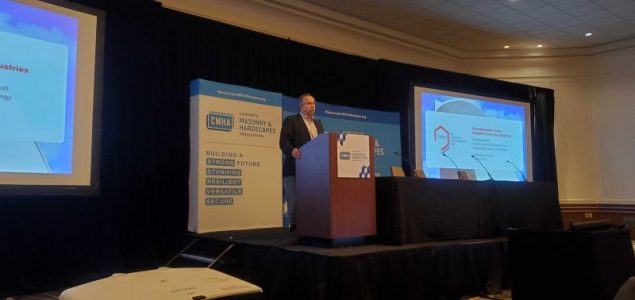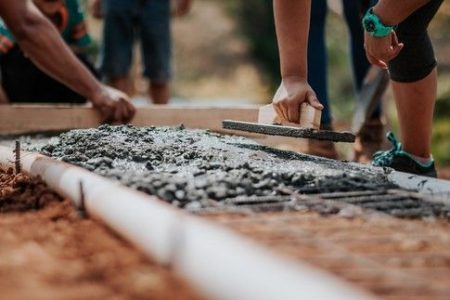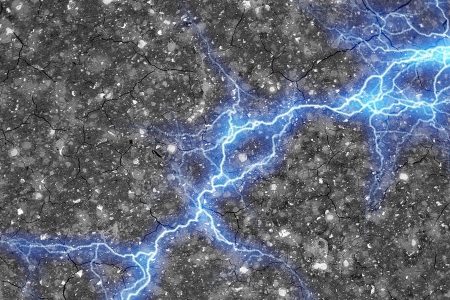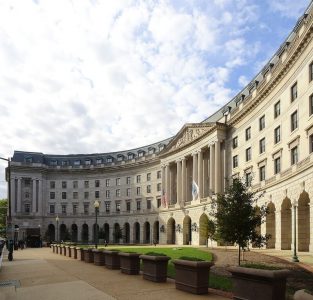Thank you for having us at the Concrete Masonry & Hardscapes Association Midyear Meeting! Here, Randolph Kirchain introduces our research on how to reduce the carbon footprint of the cement and concrete industries.

Thank you for having us at the Concrete Masonry & Hardscapes Association Midyear Meeting! Here, Randolph Kirchain introduces our research on how to reduce the carbon footprint of the cement and concrete industries.

“The PaveWise Concrete Conference has multiple sessions including a focus on Paving a Sustainable Future. Hessam Azarijafari from the MIT Concrete Sustainability Hub will present on the US Decarbonization through Pavement Life Cycle Strategies.”
Original LinkedIn post.
Register for the conference.

“Here’s how concrete can serve as a natural ‘carbon sink’
MIT researchers have developed a new method to boost concrete’s ability to sequester carbon dioxide from the atmosphere. This could help to mitigate the climate impact of the construction industry, which is a major emitter of greenhouse gases.”

Admir Masic will lead a presentation on multifunctional concrete for the Concrete Innovations webinar series on September 13th. The talk will cover topics ranging from “new formulations that act as carbon sinks, to Roman-inspired self-healing concretes, and electrically-conductive cements.” The session, Innovative Cements, begins at 11am EST.
Click to register.

“Check out our fuel/carbon savings calculator! Developed in partnership with CPAM and MIT Concrete Sustainability Hub, it assesses fuel efficiency related to pavement roughness and calculates the fuel and associated CO2 savings which can be achieved with concrete diamond grinding.”

“At the Concrete Sustainability Hub, I am notorious for being a stickler about quality figures. I am always commenting on my fellow researchers’ charts and tables while offering to help make them better. I feel that it’s my responsibility toward them to help make their work as accessible as possible, so that we can all grow as a research community.”
In MIT News, postdoc Miaomiao Zhang discusses why communicating effectively, especially through graphics, is perhaps the most important part of research.

Damian Stefaniuk unpacks new research to bolster concrete’s natural carbon sequestration potential by adding sodium bicarbonate in mixes in our new Massachusetts Institute of Technology News piece. “Overall, [chemically-induced pre-cure carbonation] demonstrates the potential for more efficient and controlled CO2 sequestration in concrete. It represents an important development in concrete sustainability, emphasizing the need for further research and considering the material’s life-cycle impacts.”

Two of humanity’s most ubiquitous historical materials, cement and carbon black (which resembles very fine charcoal), may form the basis for a novel, low-cost energy storage system, according to a new study. The technology could facilitate the use of renewable energy sources such as solar, wind, and tidal power by allowing energy networks to remain stable despite fluctuations in renewable energy supply.
The two materials, the researchers found, can be combined with water to make a supercapacitor — an alternative to batteries — that could provide storage of electrical energy. As an example, the MIT researchers who developed the system say that their supercapacitor could eventually be incorporated into the concrete foundation of a house, where it could store a full day’s worth of energy while adding little (or no) to the cost of the foundation and still providing the needed structural strength. The researchers also envision a concrete roadway that could provide contactless recharging for electric cars as they travel over that road.

Groundbreaking research on concrete as an energy storage solution, high-profile news stories, and more are featured in our August newsletter. Click to read it!

In order to prevent global temperatures from rising by two degrees Celsius this century, the United Nations estimates that annual global emissions must drop by 30 percent by the decade’s end.
Meeting this urgent goal will be difficult for all sectors, even those which have a clear path to decarbonization. For instance, we know that we must transition the electrical grid to low carbon sources, and we must also transition land-based transportation to electrical sources.
Op-ed by Randolph Kirchain and Hessam AzariJafari.
